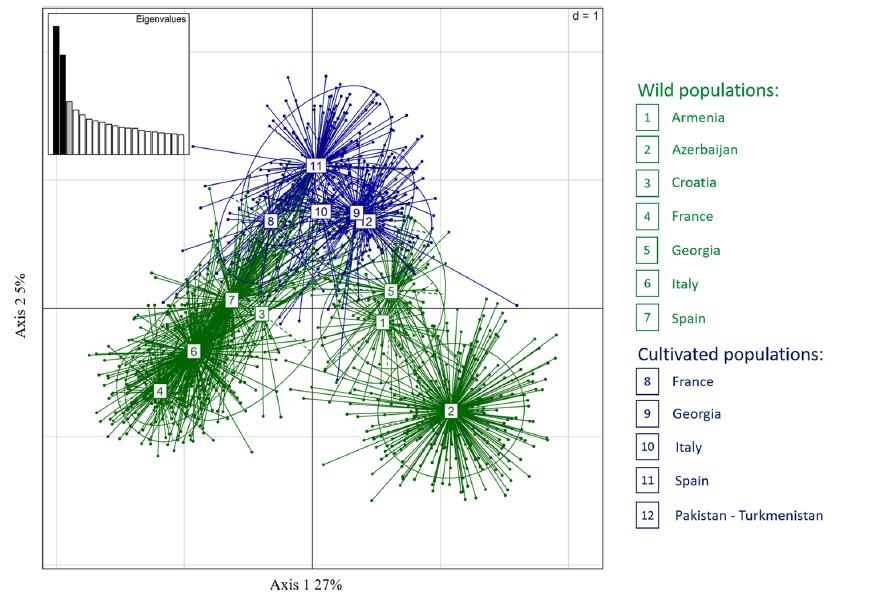ALWAYS NEAREST TO THE PRIMARY DOMESTICATION CENTERS OF THE GRAPEVINES
The grapevines (Vitis vinifera L.) has been cultivated for over 8,000 years. Based on archaeological, historical-literary and genetic evidence, the places where the primary process of domestication took place are located between the Southern Caucasus and Central Asia.
With this publication, an international group of researchers, including Gabriella De Lorenzis and Osvaldo Failla, respectively a researcher and professor of viticulture at DiSAA, have made a decisive contribution to the challenge of identifying the places of primary grapevine domestication.
Based on the genetic analysis of 1378 accessions of wild grapevine and cultivated grapevine from the Mediterranean basin, from the Southern Caucasus and Central Asia, it has been possible to highlight genetic relationships between Mediterranean and Central Asian grapevines, as well as highlighting a significant gene flow between domestic and wild vines. The analysis made it possible to identify at least two places of primary domestication of grapevines: one in the southern Caucasus and the other in western Europe.
Figure: genetic structure of wild and domestic vine; the areas of overlap between the two subspecies highlight the places of primary domestication.
Reference: Riaz, S., De Lorenzis, G., Velasco, D., Koehmstedt, A., Maghradze, D., Bobokashvili, Z., Musayev, M., Zdunic, G., Laucou, V., Walker, M.A., Failla, O., Preece, J.E., Aradhya, M., Arroyo-Garcia, R. (2018). Genetic diversity analysis of cultivated and wild grapevine (Vitis vinifera L.) accessions around the Mediterranean basin and Central Asia. BMC Pant Biology, 18, 137 (1–14). doi:10.1186/s12870-018-1351-0

